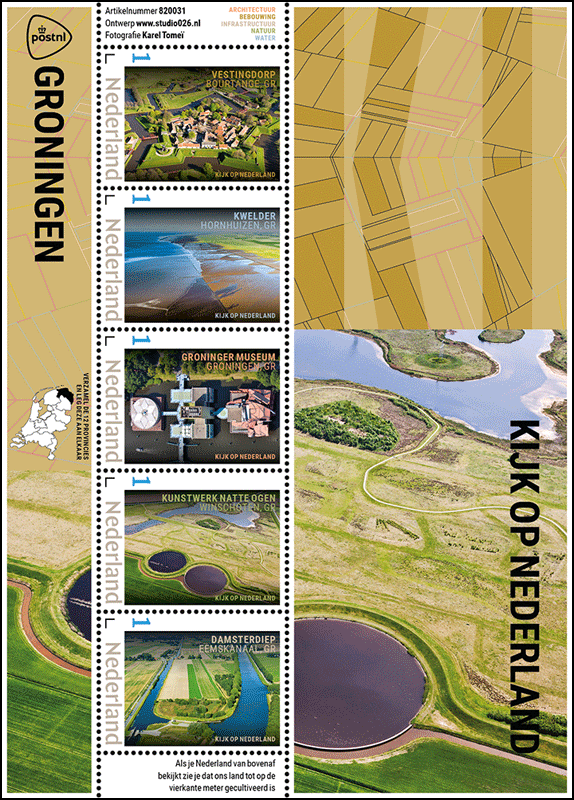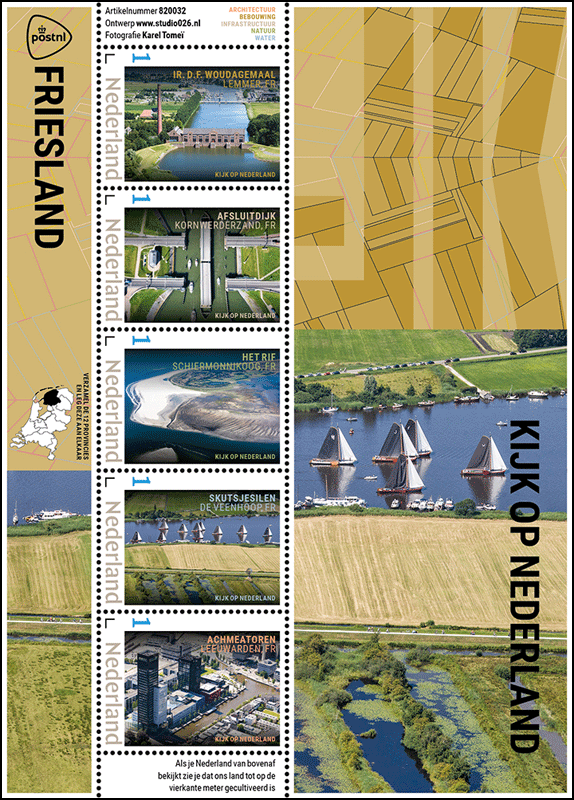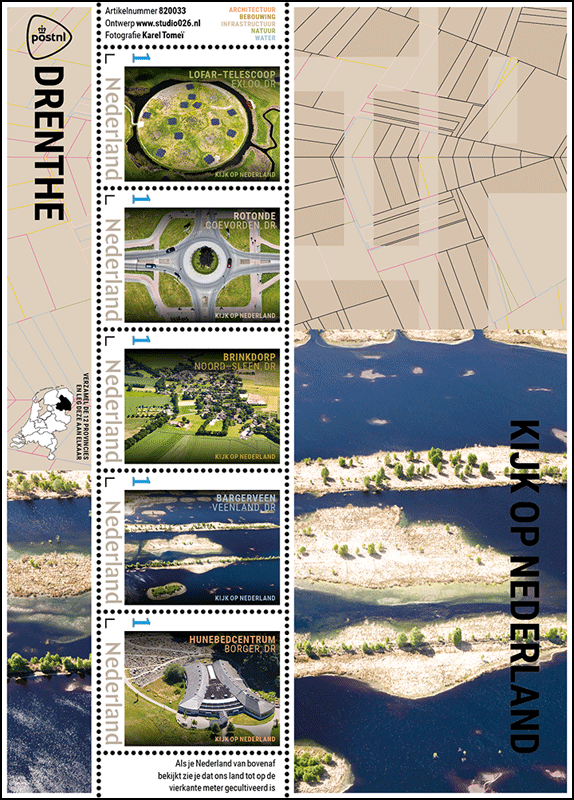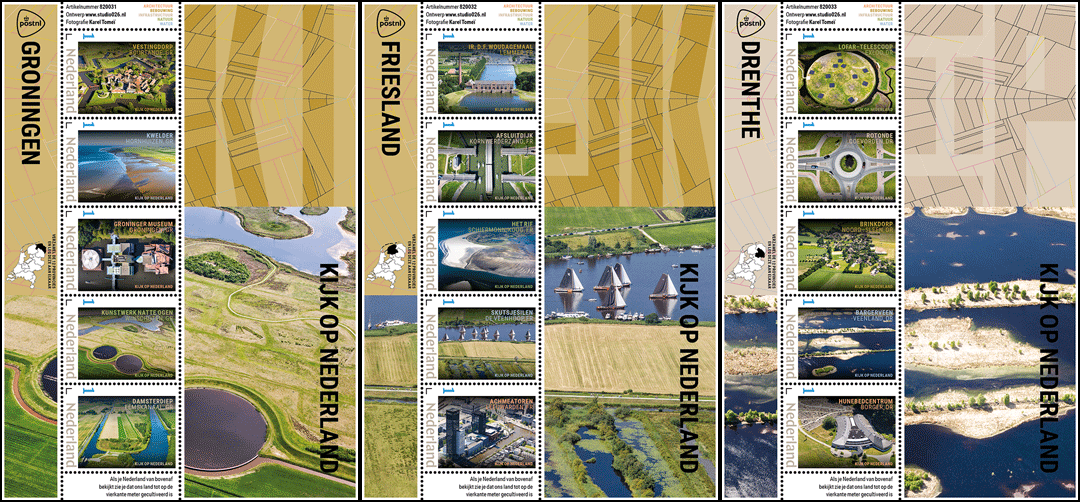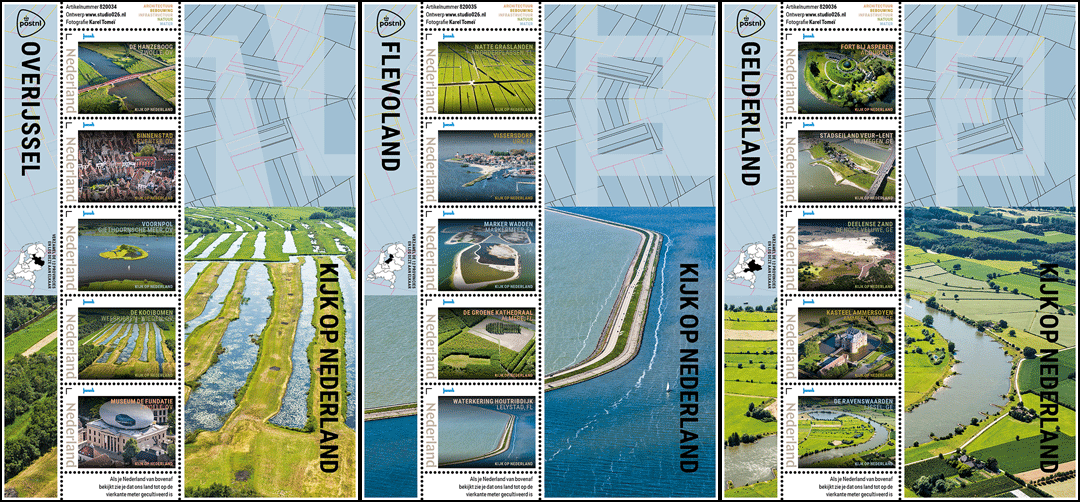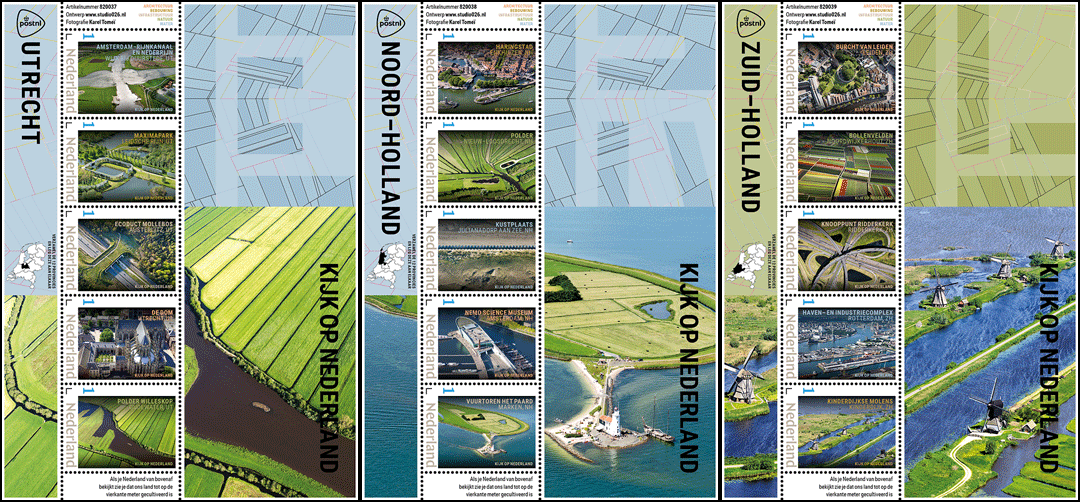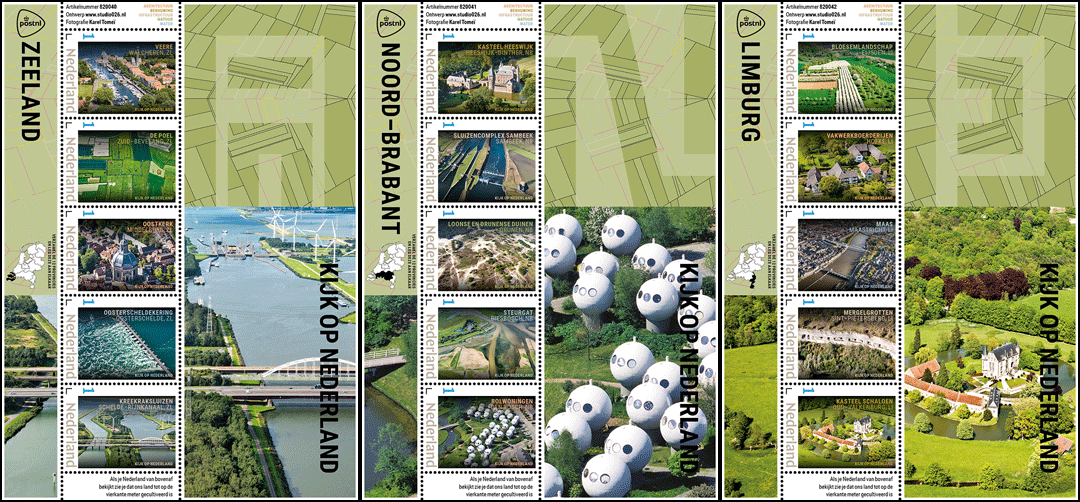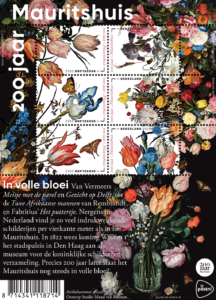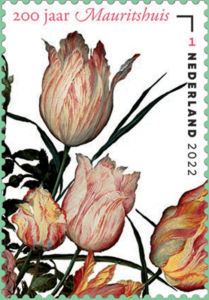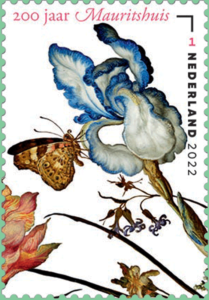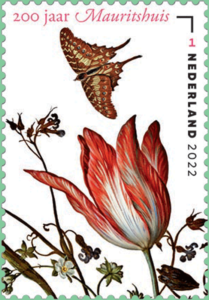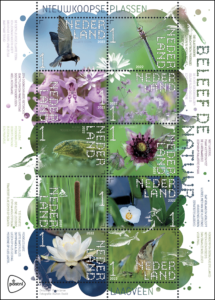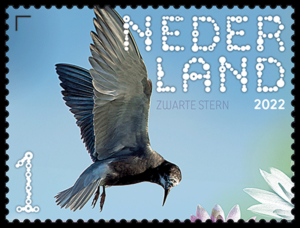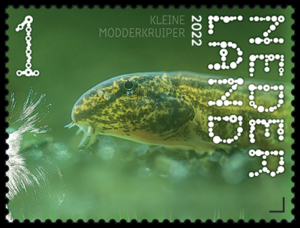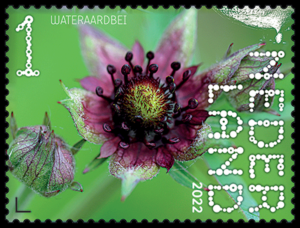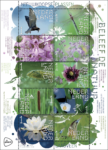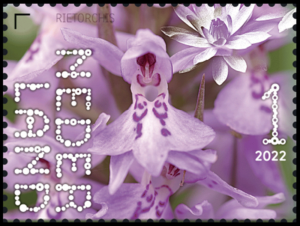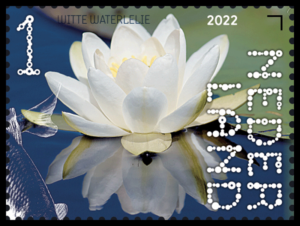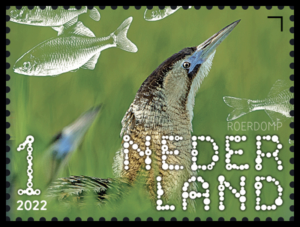[from a PostNL press release] [click on any of the pictures for larger versions]
Typically Dutch – Sailing
Issue date: May 9, 2022
- Sheet of six stamps in six identical designs
- Item number: 420561
- Design: Claire Bedon and Edwin van Praet (Total Design), Amsterdam
This issue is the fourth in the Typically Dutch series this year. In 2022, the multi-annual series is dedicated to five sports in which the Dutch excel. Earlier this year, stamps 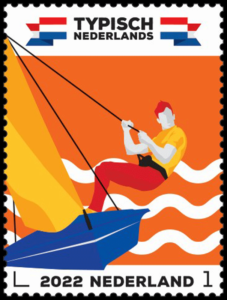 featuring ice skating (3 January), hockey (21 March) and cycling (4 April) were published as part of this series. On 15 August, PostNL will complete this stamp series by issuing a football-themed sheet.
featuring ice skating (3 January), hockey (21 March) and cycling (4 April) were published as part of this series. On 15 August, PostNL will complete this stamp series by issuing a football-themed sheet.
The issue was designed by graphic designer Clair Bedon and creative director Edwin van Praet from Total Design in Amsterdam. The six identical postage stamps will be marked ‘Nederland 1’, the denomination for items weighing up to 20g destined for the Netherlands.
Living with water, fighting against water, using water – that may be the best way to describe the Dutch. It is not surprising, therefore, that the Netherlands is an international leader when it comes to water sports: from swimming and water polo to windsurfing, kite surfing and sailing. The Royal Dutch Water Sports Association (Watersportverbond) has more than 400 water sports associations with over 80,000 members. This association has a long history and was founded in 1890 as Verbonden Zeilvereenigingen van Nederland en België. The Watersportverbond represents the interests of youth teams and promising teams up to and including the top athletes of TeamNL Zeilen (Sailing). The federation is also responsible 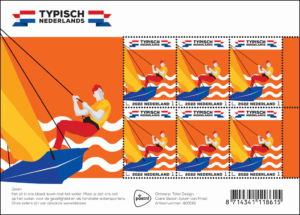 for registering over 100 national, international, Olympic and Paralympic competition classes.
for registering over 100 national, international, Olympic and Paralympic competition classes.
The Dutch are at the very top in global sailing and windsurfing. Marit Bouwmeester (Laser Radial), Dorian van Rijsselberghe, Kiran Badloe and Lilian de Geus (RS:X), Lobke Berkhout (470), Annemiek Bekkering and Annette Duetz (49er FX) have already been world champions in their class at least once. The most recent successes were achieved at the World Championships at the end of 2021 in Oman, with gold medals for Odile van Aanholt/Elise de Ruijter (49er FX) and Bart Lambriex/Floris van de Werken (49er). The Dutch have also won many gold medals at the Olympic Games, both past and present. From Joop Carp, Berend Carp and Piet Wernink (6.5-metre class, Antwerp 1920) and Daan Kagchelland, O-Jolle, Berlin 1936) to Stephan van den Berg (windsurfing, Los  Angeles 1984), Dorian van Rijsselberghe (RS:X, London 2012, Rio de Janeiro 2016), Marit Bouwmeester (Laser Radial, Rio de Janeiro 2016) and Kiran Badloe (RS: X, Tokyo 2020).
Angeles 1984), Dorian van Rijsselberghe (RS:X, London 2012, Rio de Janeiro 2016), Marit Bouwmeester (Laser Radial, Rio de Janeiro 2016) and Kiran Badloe (RS: X, Tokyo 2020).
The Typically Dutch – Sailing stamp sheet features an illustration of a competitive sailor hanging outboard from a trapeze on his sailing boat. On the bottom half of the stamp, three wavy lines can be seen in the background, symbolising the water on which competitive sailors practice their sport. The bottom of each stamp has a white strip containing the sorting hook, the year 2022, the country (Netherlands) and the denomination (1). The keel of the sailing boat runs into this strip slightly. In the top left-hand corner, the same happens with the top of the sail and the cordage. The logo for the Typically Dutch series is printed above each stamp, with a folded Dutch banner on the left and right. The picture is repeated in enlarged form on the edge of the sheet. The dominant colour orange continues on the tabs on the right. The Typically Dutch logo appears once more on the top edge of the sheet, while the bottom edge  features a short explanatory text.
features a short explanatory text.
“We explored two types of sports,” explains van Praet. “On the one hand, there were the Old Dutch sports often tied in with a particular region, like klootschieten, beugelen, kaatsen and fierljeppen. On the other hand, we had the sports loved by everyone in the Netherlands, sports linked to our culture, with water and with large numbers taking part in them: football, hockey, horse riding, swimming, korfball, sailing, golf, et cetera.”
The mood of the Typically Dutch – Sailing stamps is established by the orange background colour, with blue (sailing boat), red (trousers, hair), yellow (sail, shirt), grey (face, arms and hands) and black (mast, cordage, trapeze vest) as contrasting colours. “All five issues this year include the colours of the Dutch flag [and] in the right order,” says van Praet. “First red, then white, then blue and finally two kinds of orange.
“Diversity was essential. That is why we used red, white, blue and orange for the skin colour, rather than pink or brown. The series features two female athletes, two male athletes including this competitive sailor, and one neutral figure.”
The stamps are available while stocks last at the post office counter in Bruna shops and at www.postnl.nl/bijzondere-postzegels [in Dutch]. The stamps can also be ordered by phone from the Collect Club customer service on telephone number +31 (0)88 868 99 00. The validity period is indefinite.
Technical Details:
Postage stamp dimensions: 30 x 40 mm:
 Sheet size: 170 x 122 mm
Sheet size: 170 x 122 mm
Paper: normal with phosphor print
Gum: gummed
Printing technique: offset
Printing colours: cyan, magenta, yellow, black and orange
Print run: 75,000 sheets
Appearance: sheet of 6 stamps in 6 identical designs
Design: Edwin van Praet and Claire Bedon, Total Design, Amsterdam
Printing company: Cartor Security Printers, Meaucé-La Loupe, France
Item number: 420561

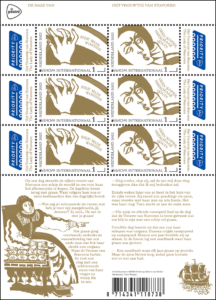
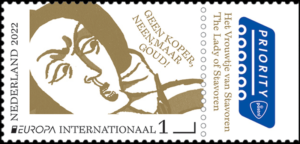
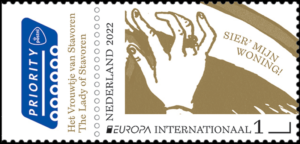
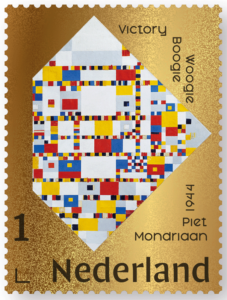
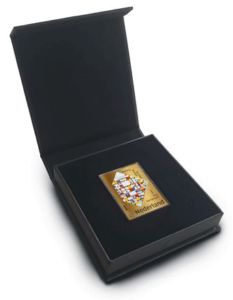
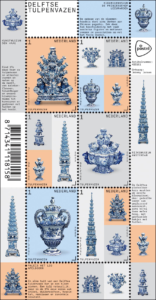
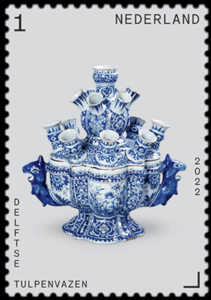
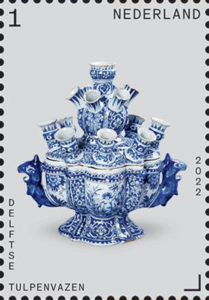
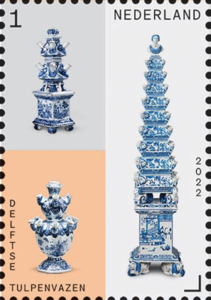
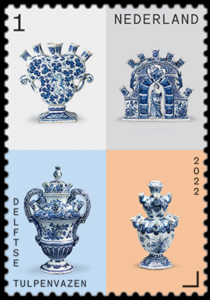
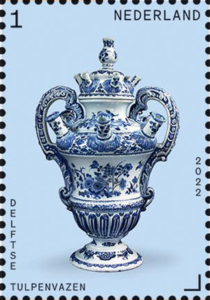
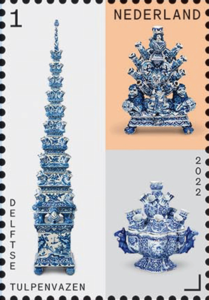
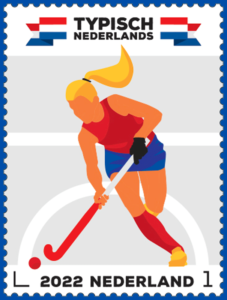
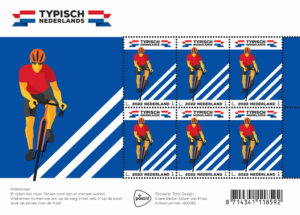
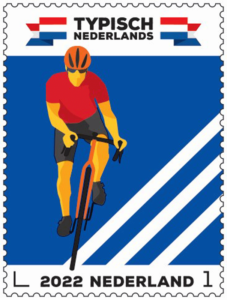
 the most kilometres are covered by the 36,000 cyclists who are members of the over 370 cycling clubs in the Netherlands. Their interests are protected by the Koninklijke Nederlandsche Wielren Unie (KNWU, ‘Royal Dutch Cycling Union’), which was founded in 1928. Besides road cycling, there are many other cycling disciplines: BMX, track cycling, cyclocross, mountain biking, beach racing, para-cycling and artistic cycling.
the most kilometres are covered by the 36,000 cyclists who are members of the over 370 cycling clubs in the Netherlands. Their interests are protected by the Koninklijke Nederlandsche Wielren Unie (KNWU, ‘Royal Dutch Cycling Union’), which was founded in 1928. Besides road cycling, there are many other cycling disciplines: BMX, track cycling, cyclocross, mountain biking, beach racing, para-cycling and artistic cycling. disciplines such as track cycling (Jeffrey Hoogland, Harrie Lavreysen) and cyclocross (Lars Boom, Matthieu van der Poel). The achievements of Dutch female cyclists are even more impressive. Especially over the past few decades, Dutch women have dominated global cycling. Well-known champions are Leontien van Moorsel (four Olympic gold medals, Tour de France Féminin winner; shown on the right), Marianne Vos (one Olympic gold medal, twice World Championships winner in road cycling, three times Giro Rosa winner), Anna van der Breggen (one Olympic gold medal, twice World Championships winner in road cycling, once World Championships winner in time trial, four times Giro Rosa winner) and Annemiek van Vleuten (one Olympic gold medal, once World Championships winner in road cycling, twice World Championships winner in time trial, twice Giro Rosa winner).
disciplines such as track cycling (Jeffrey Hoogland, Harrie Lavreysen) and cyclocross (Lars Boom, Matthieu van der Poel). The achievements of Dutch female cyclists are even more impressive. Especially over the past few decades, Dutch women have dominated global cycling. Well-known champions are Leontien van Moorsel (four Olympic gold medals, Tour de France Féminin winner; shown on the right), Marianne Vos (one Olympic gold medal, twice World Championships winner in road cycling, three times Giro Rosa winner), Anna van der Breggen (one Olympic gold medal, twice World Championships winner in road cycling, once World Championships winner in time trial, four times Giro Rosa winner) and Annemiek van Vleuten (one Olympic gold medal, once World Championships winner in road cycling, twice World Championships winner in time trial, twice Giro Rosa winner).